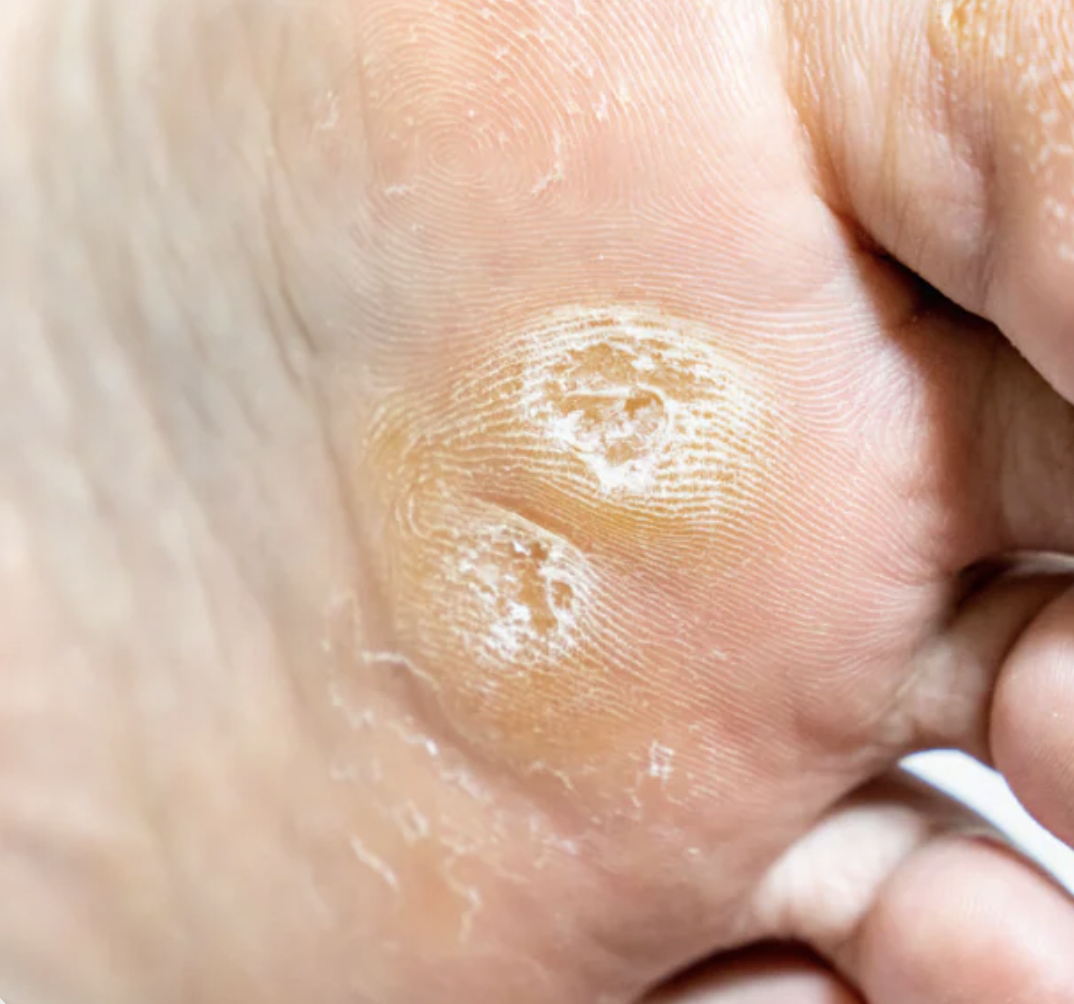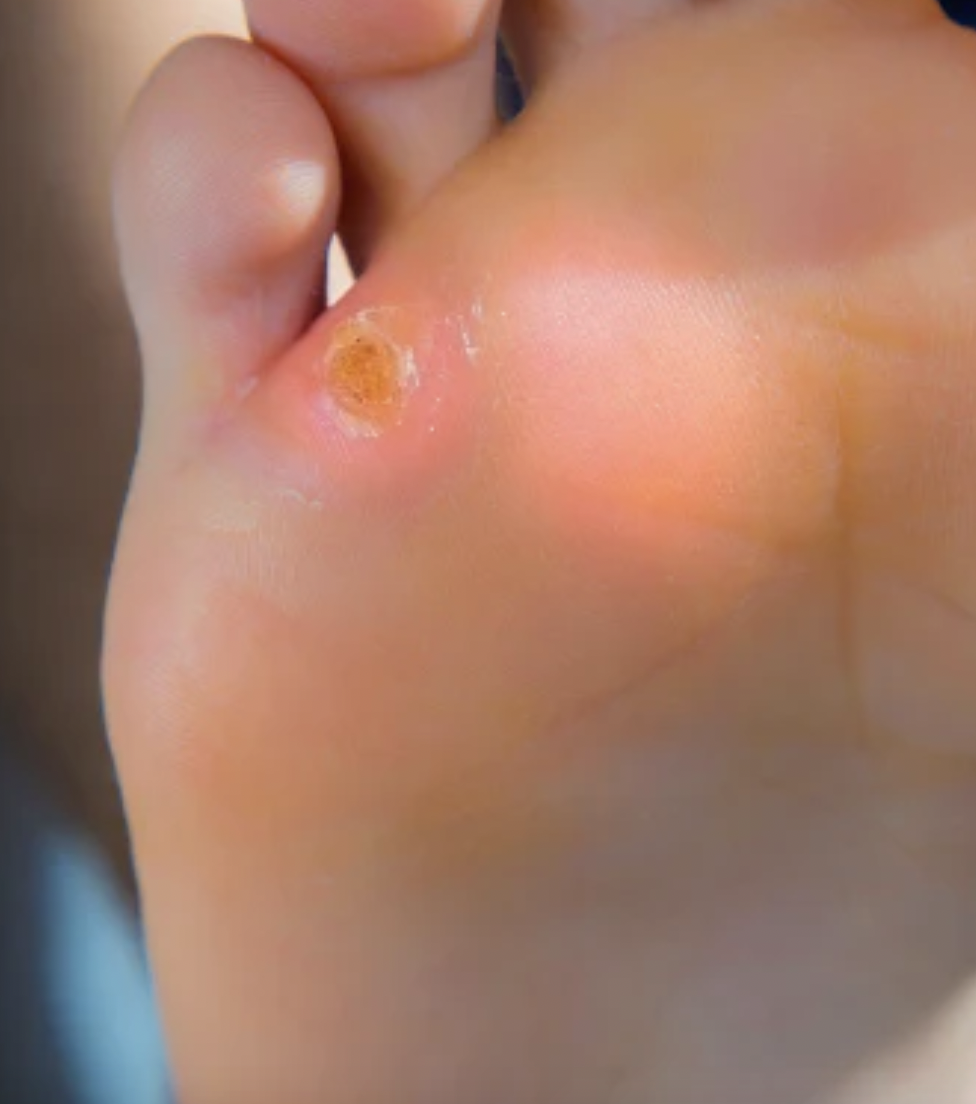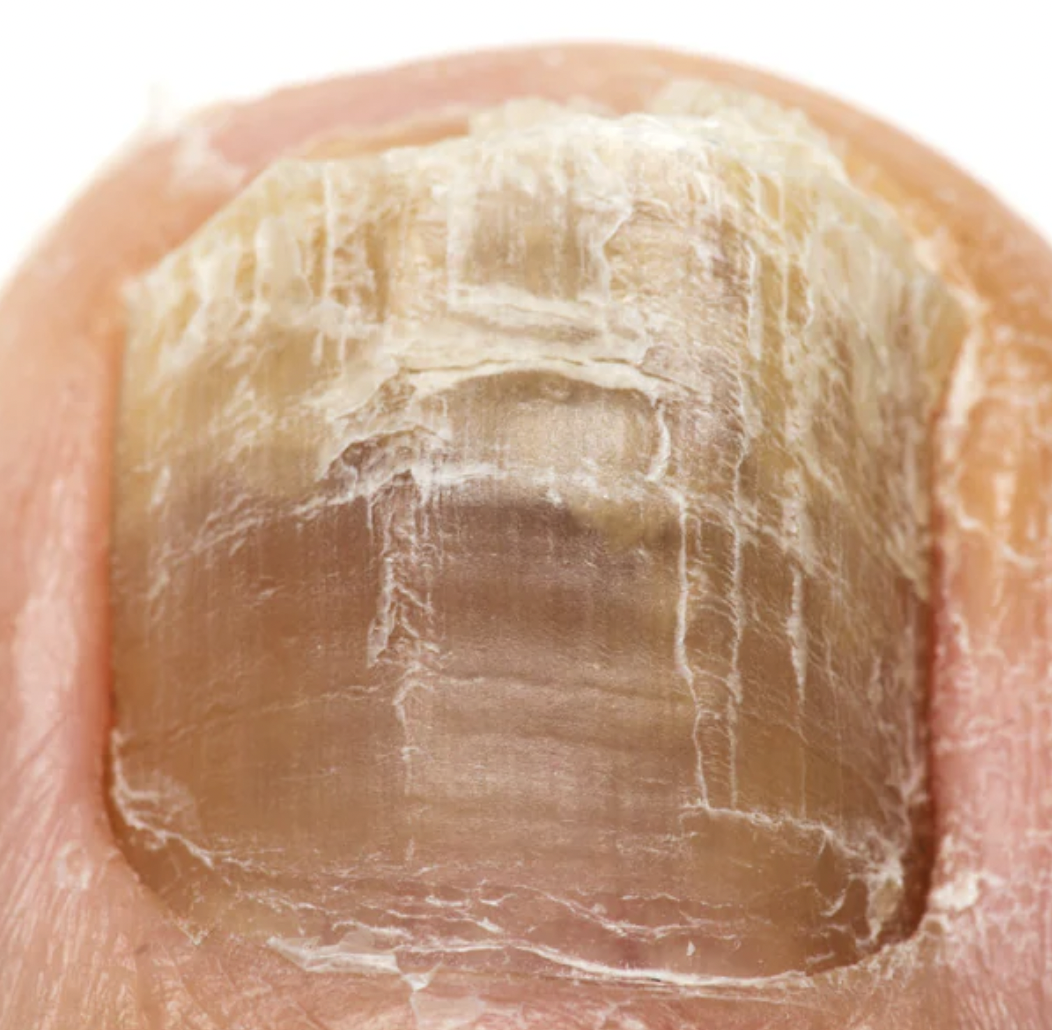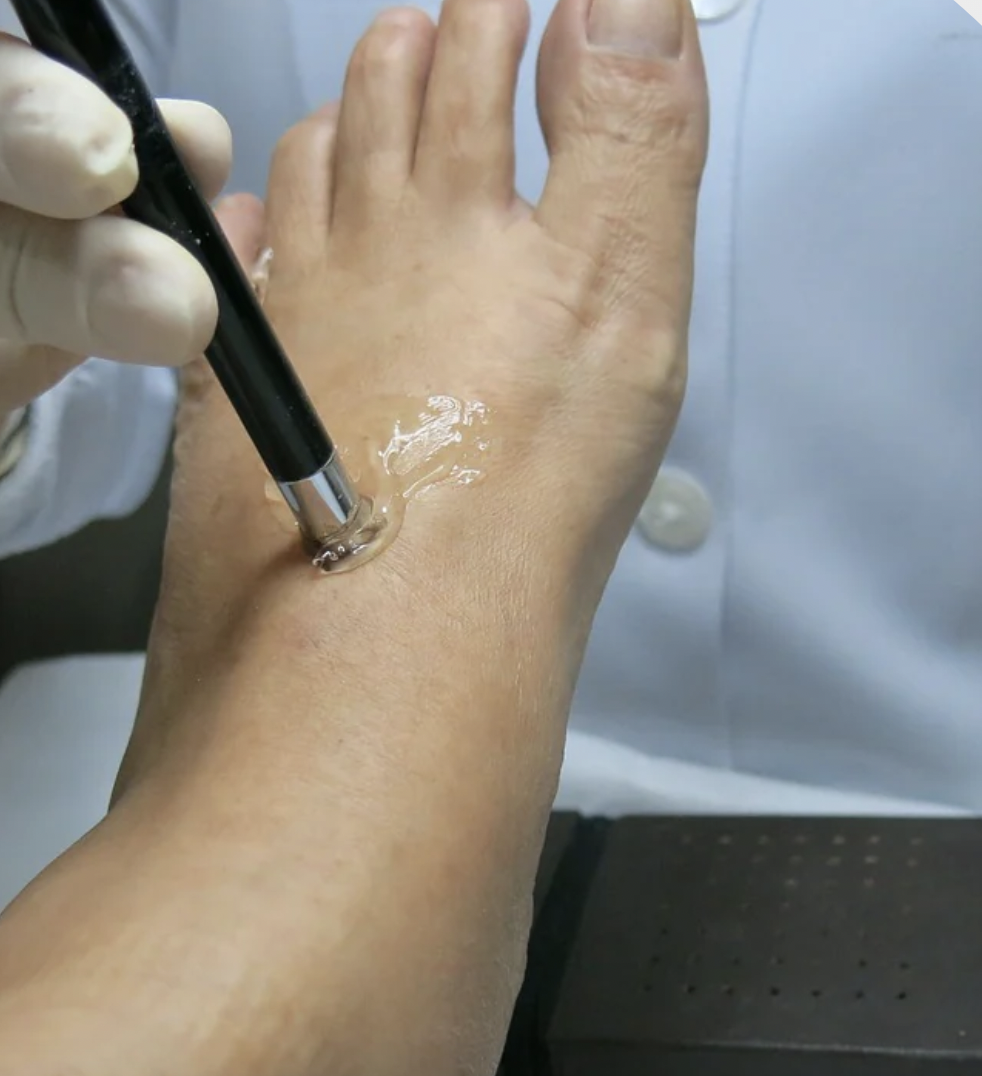Learn more about different conditions:
Corns & Callus
-
Corns and calluses are thickened skin areas that develop from repeated pressure or friction, with corns being smaller and more localised, often on toes, and calluses larger, usually on weight-bearing areas.
If left untreated, corns can cause pain when walking with the possibility of pus developing beneath them.
-
They are treated by a podiatrist who carefully enucleates and cuts them out with a sterile blade, typically with minimal discomfort.
Cracked Heels | Dry Skin
-
Hard skin and dry, cracked heels, including fissures, develop from repeated friction, pressure, or dehydration. Hard skin often appears on the soles of the feet, while dry or cracked heels occur when the skin loses moisture, leading to painful splits called fissures. If left untreated, these can become painful and prone to infection.
-
Treatment involves the careful removal of hard skin by a podiatrist using a sterile blade, sanding and smoothing, followed by emollient therapy to restore moisture and prevent further cracking, promoting soft, healthy skin.
Verrucae/Warts (HPV)
-
Verrucas are a type of wart that develops on the soles of the feet, caused by the human papillomavirus (HPV). The virus typically enters the skin through tiny cuts or abrasions, making areas like communal showers, swimming pools, and gyms common sources of infection.
Verrucas appear as rough growths with small black dots (capillaries) that may be painful when pressure is applied.
This is particularly when located on weight-bearing areas of the foot. It is important to know that the success of these treatments depends significantly on the body’s immune response to the virus.
-
Click here for treatment options.
Fungal Nails
-
Fungal toenails, or onychomycosis, are caused by dermatophytes—fungi that thrive in warm, moist environments like shoes. These fungi enter through small cracks in the nail or skin, feeding on keratin and leading to thick, discoloured, and brittle nails.
The infection usually begins at the nail’s edge and spreads deeper. Risk factors include poor foot hygiene, tight footwear, and walking barefoot in communal areas.
-
Treatment involves regular nail debridement, topical antifungals, and, in some cases, oral antifungal medications. Recovery can take several months due to slow regrowth rates.
Diabetes | Assessments
-
Diabetic foot care is crucial due to the increased risk of complications like neuropathy and poor circulation, which can lead to serious issues if not managed properly.
A diabetic foot check is essential for early detection of problems. This comprehensive assessment includes Doppler testing to evaluate blood flow, monofilament testing to check for nerve damage, and tuning fork tests to assess vibration sensitivity.
Regular foot checks help prevent ulcers, infections, and more severe complications, making them a key component of diabetic care.
Ingrown Toenails
-
Ingrown toenails occur when the nail edge grows into the surrounding skin, causing pain, redness, and swelling. They are often due to improper nail trimming, tight footwear, or injury. If untreated, they can become infected and lead to severe discomfort.
-
Treatment options include conservative care, such as gently lifting the nail and trimming it properly to relieve pressure. For persistent cases, nail surgery may be necessary to remove part or all of the nail, with phenol used to prevent regrowth and offer a long-term solution.
Heel Pain
-
Heel pain is commonly caused by plantar fasciitis, a condition where the thick band of tissue running along the bottom of the foot becomes inflamed due to overuse or strain.
Other causes include Achilles tendinitis and heel spurs, which also result from stress on the heel.
Contributing factors include poor footwear, pronation, obesity, and prolonged standing. The pain typically occurs at the bottom or back of the heel and can worsen with activity, making early diagnosis and treatment essential to prevent further complications.
-
Treatment for heel pain depends on the cause, but often includes rest, wearing supportive footwear, and using insoles to reduce pressure on the heel. Gentle stretching exercises for the foot and calf can help relieve tension, while applying ice may reduce inflammation and pain. In some cases, a podiatrist may recommend taping, special padding, or shockwave therapy for stubborn pain.
Making changes to daily activities, improving posture, or managing weight can also support long-term recovery.
Nail Trauma
-
Nail trauma, such as from a heavy object dropping on the toe or repetitive pressure, can lead to a subungual hematoma, where blood collects under the nail, causing discoloration and intense pain.
Over time, the trauma can result in long-term damage to the nail, including onychauxis (abnormal thickening of the nail) and onycholysis (detachment of the nail from the nail bed).
-
Depending on the severity of the injury, the toenail may take several months to a year to fully regrow, often requiring careful management to minimise further complications.
Biomechanics
-
Biomechanics is the study of how your body moves, especially how your feet, ankles, knees, and hips work together when you walk or run. If something is out of alignment, it can lead to pain or discomfort not just in the feet, but also in the legs, back, or hips.
-
A podiatrist can assess your gait (the way you walk), check for any imbalances or issues, and recommend solutions like custom insoles, footwear advice, or specific exercises. This helps improve movement, reduce pain, and prevent future problems.








